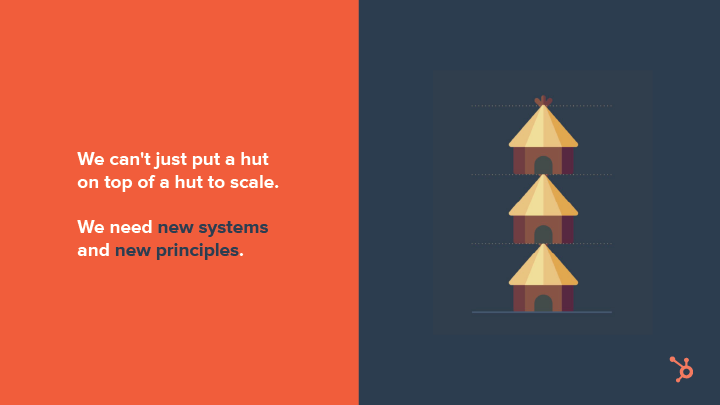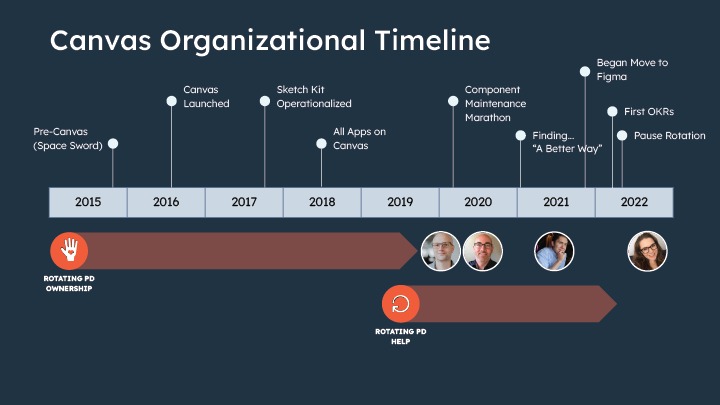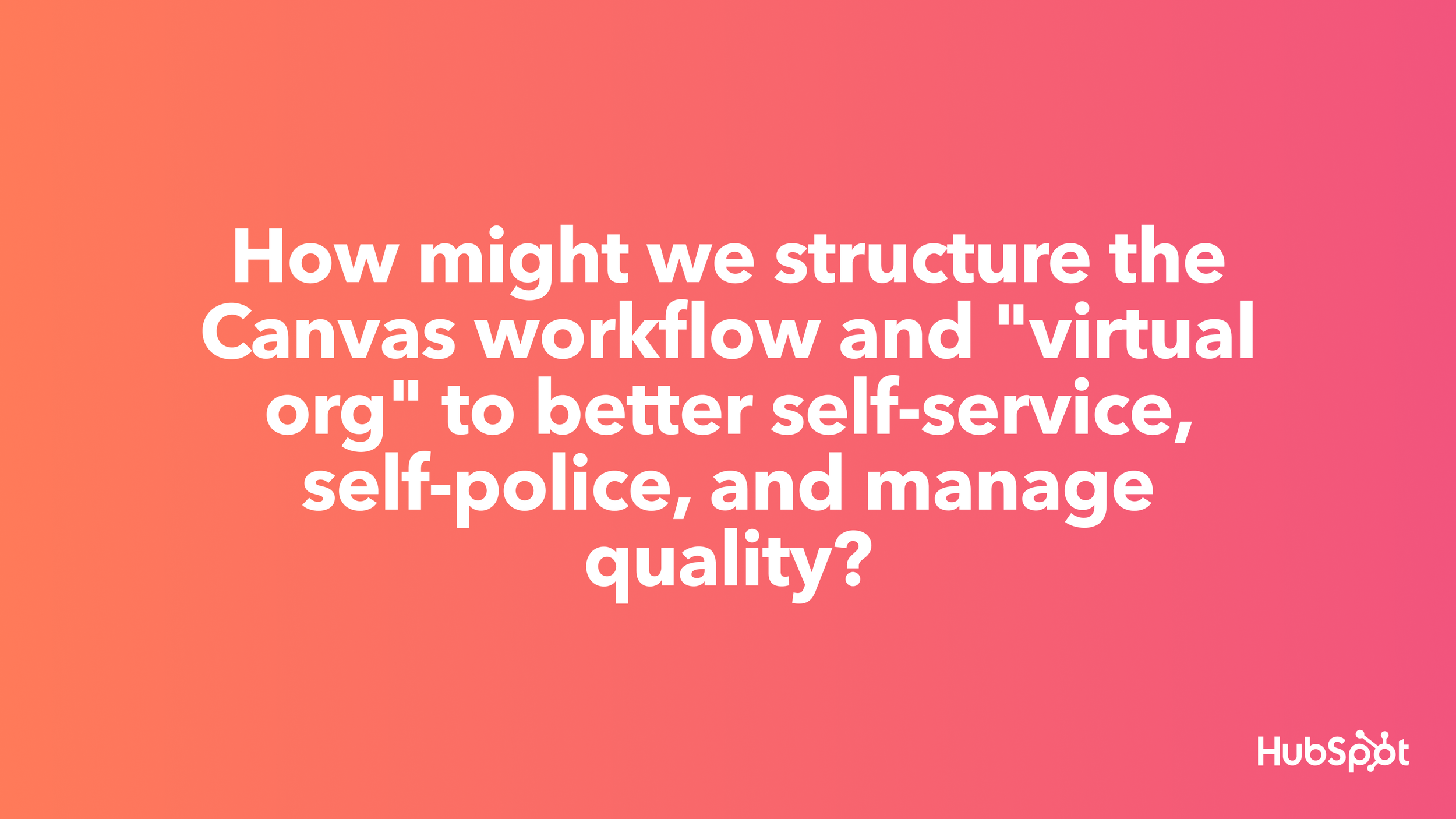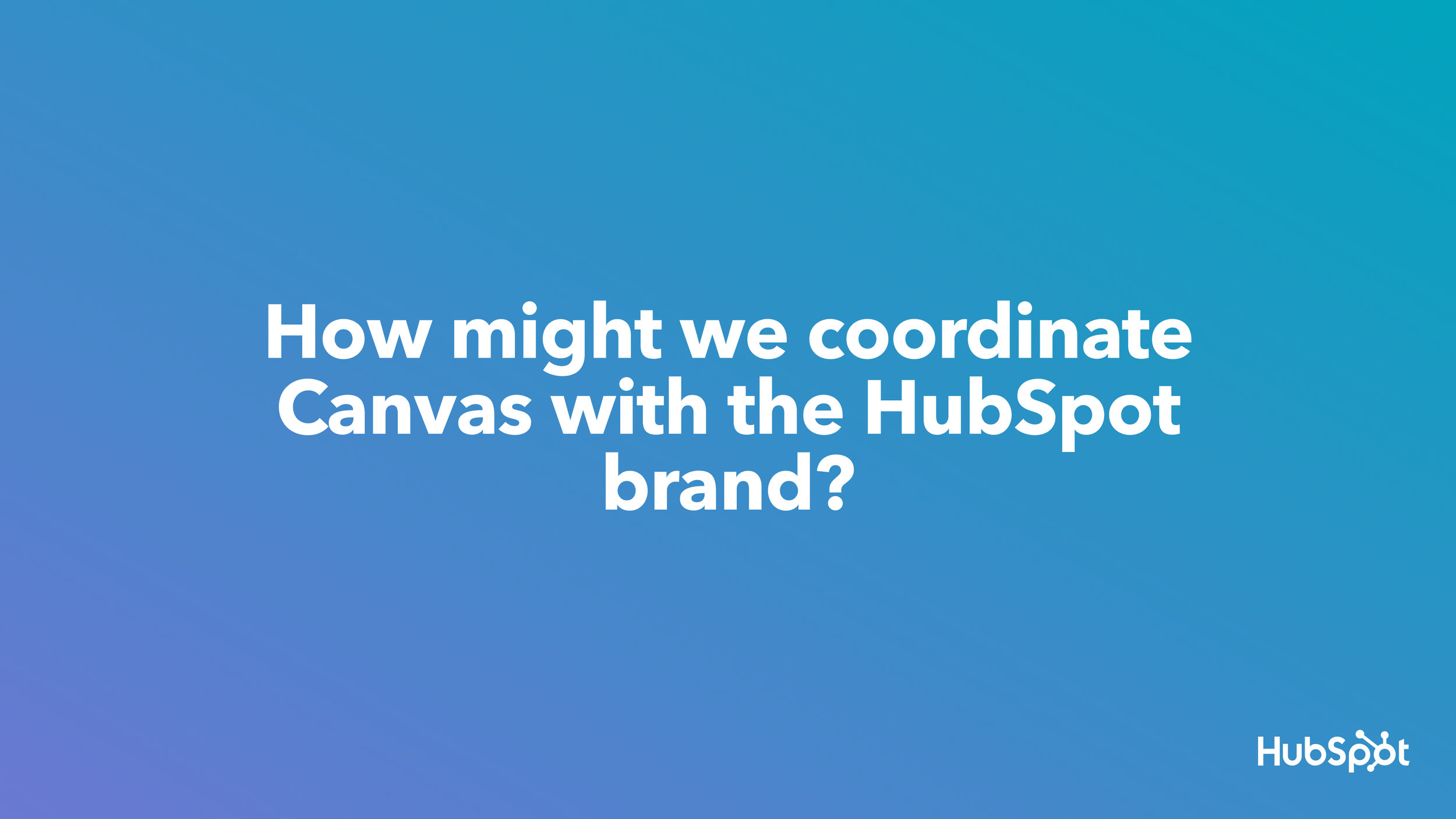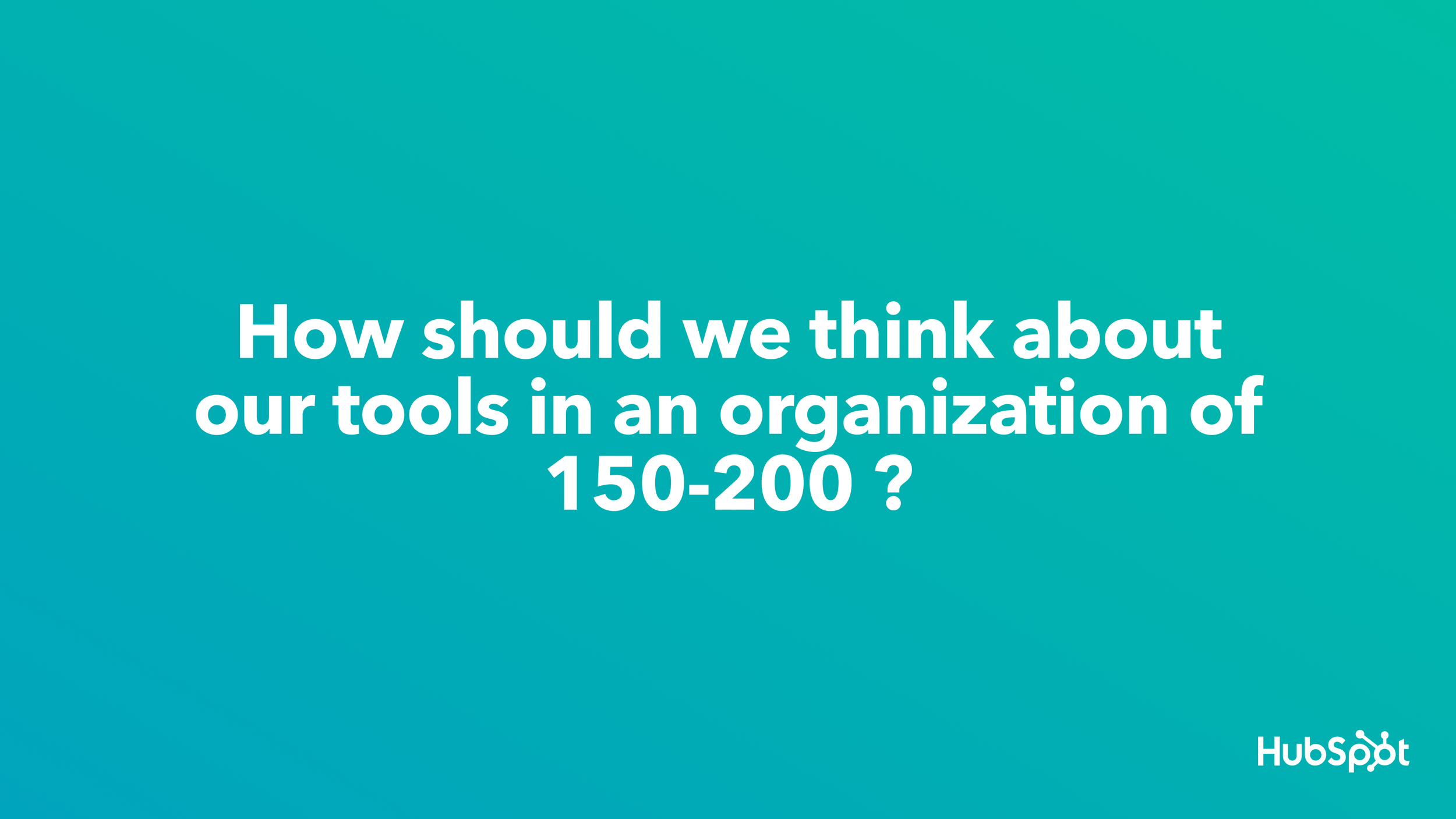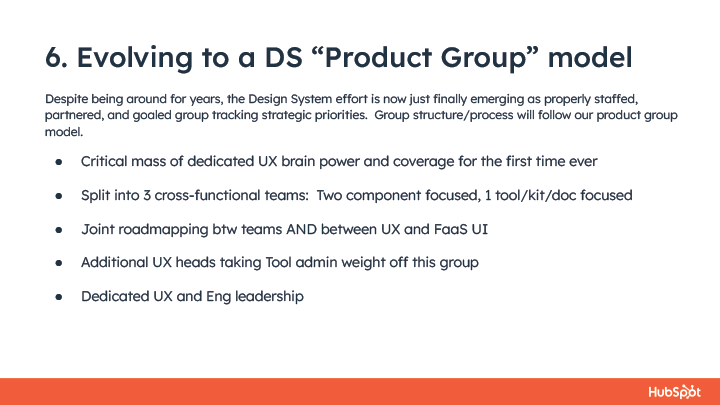HUBSPOT
Evolving a successful design system to accommodate massive organization growth and product complexity.
Challenge
Our usable design system had been widely adopted across UX, product, and engineering—an undeniable success. But as both the platform and product org grew, the governance model that had served us well was under strain.
The challenge became clear: we needed a new model that could scale sustainably into the future.
Goal
Reduce time to improve or create new components.
Empower teams to lead on components they owned.
Stop doing costly UI audits.
Give people ownership over improving usability.
Get serious about funding the design systems team.
Constraints
Don’t touch the actual visual language and UI
Utilize as many existing designers as possible vs. simply growing the design systems team.
Process
RIP Frankenproduct, hello Canvas -HubSpot’s first design system.
When I joined HubSpot in 2016, the product was running on three or four competing design languages and had no formal design system. Working with a core group of designers, I helped lead the effort to define principles, test directions with customers, and ultimately build the foundation of HubSpot’s first unified design system.
A small team of four of us locked in for an intensive sprint, mapping out every component and interaction to create the scaffolding that would guide product teams moving forward. Two years later, the system launched across the entire platform—adopted by every product team and unifying HubSpot’s product experience at scale.
With backing form leadership, a pragmatic gradual roll out, and a UX team that was focused on seeing it through, by all accounts Canvas was the biggest scaled success the UX team ever had at HubSpot.
Finally, a dedicated design systems team
For the first four years, the design system was maintained part-time by designers embedded on product teams. Eventually, we made the case for dedicated ownership and hired the first full-time design system designer— followed by three more. This new team took on the heavy responsibility of running Canvas, HubSpot’s contribution model. They evaluated and approved proposed updates, globalized changes across the SketchKit and front-end code, and proactively improved components for the entire organization.
What we learned was clear: maintaining a system at this scale wasn’t just important—it was a massive, ongoing effort. The team struggled to keep up with the volume of requests, designers began to invent their own duplicative solutions to problems, and the only goal that remained was consistency at all cost.
Wait, what is a design system?
What began in 2016 as a way to unify HubSpot’s UI and give designers easy access to components had, years later, grown into something far more complex. With nearly 300 designers and a 100+ product teams, the system had outpaced its original boundaries—making it impossible for a small group of owners to maintain full visibility across the platform.
At that point, we stepped back and asked fundamental questions: What is a design system? What belongs in it, and what doesn’t? How broad or focused should it be? Who owns what? What is the goal here? By rethinking the scope, documentation, and governance model, we prepared the system to evolve alongside the rapid growth of both the product and the design organization.
Consistency is not the (only) goal, empowering product teams to make great experiences is
As the design system matured, we realized that pursuing perfect consistency carried steep hidden costs—slowing teams down with unnecessary bureaucracy and governance. Instead of chasing 100% alignment, we reframed the mission: make it easier for designers and engineers to craft usable interfaces.
That shift meant not just scaling the existing system, but creating new principles and even entirely new systems to support the organization more effectively. It also meant recognizing that locals often have the best knowledge of the terrain. We had product teams and groups that were essentially owners of entire components and experiences that could and should be driving the adoption of those things within HubSpot- not the design systems team.
New tools and organizing princples
With a new mission in place, we built a strategy to evolve HubSpot’s design system into something that could scale with the company’s growth. The approach centered on five pillars:
Layered systems — global decisions cascading down through form factors like web and mobile, and into local systems owned by teams closest to the work.
Opinionated components — moving beyond atomic pieces to provide clear, ready-to-use solutions.
Modern tooling — upgrading from Sketch to Figma and adopting Storybook for documentation.
Automated measurement — using QA tools to flag UI drift and enforce standards.
Organizational investment — treating the design system like a true product group, with a dedicated director and headcount.
This strategy redefined the design system as a scalable, flexible foundation for the entire product ecosystem.
Results
I don’t know! I left before I could see this through.
HubSpot went on to fund a 10+ person design systems team.
Canvas is still widely adopted and used
